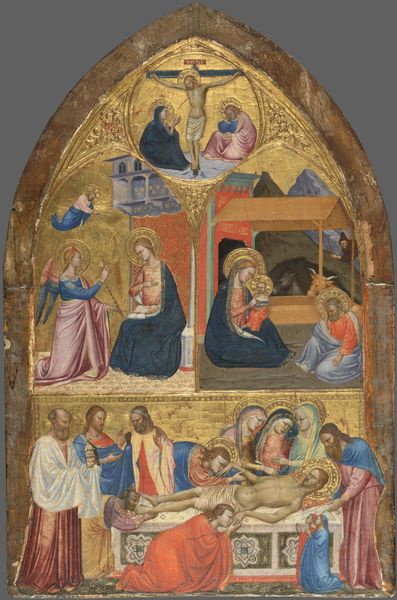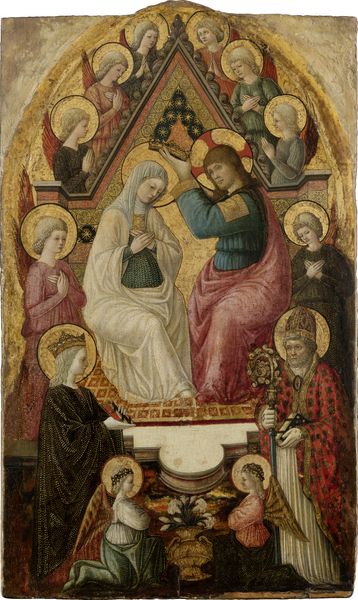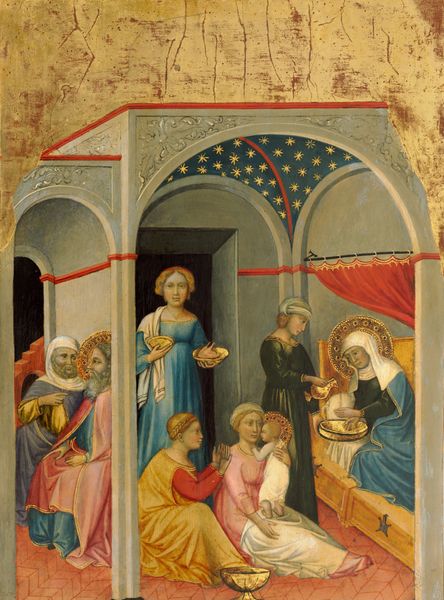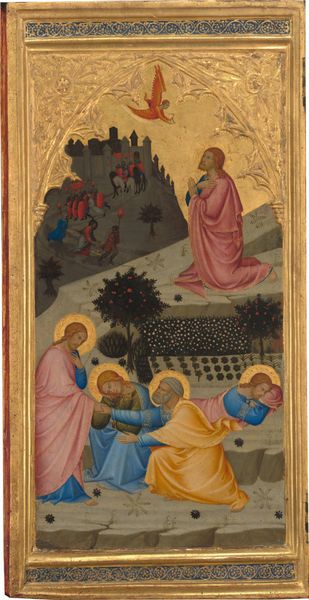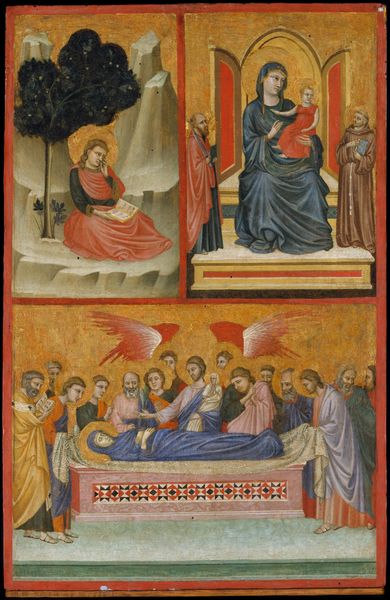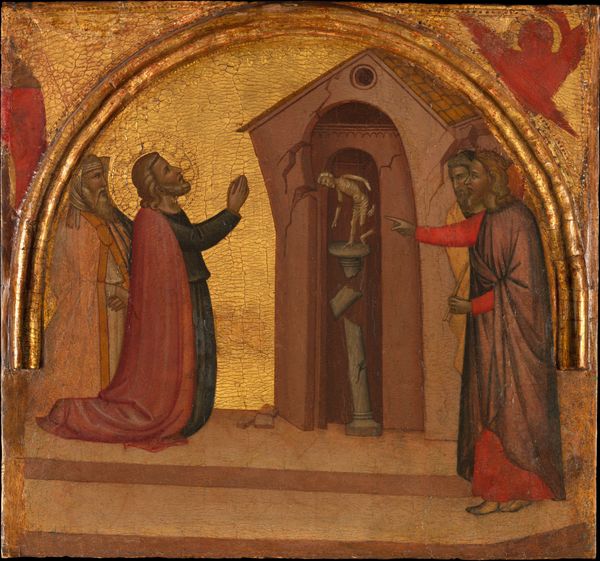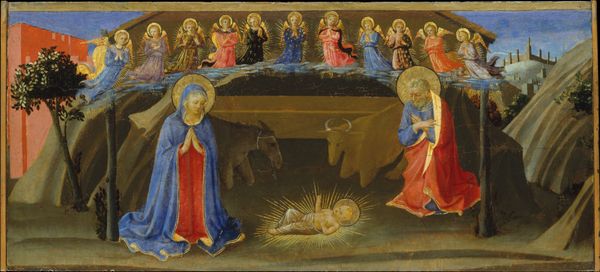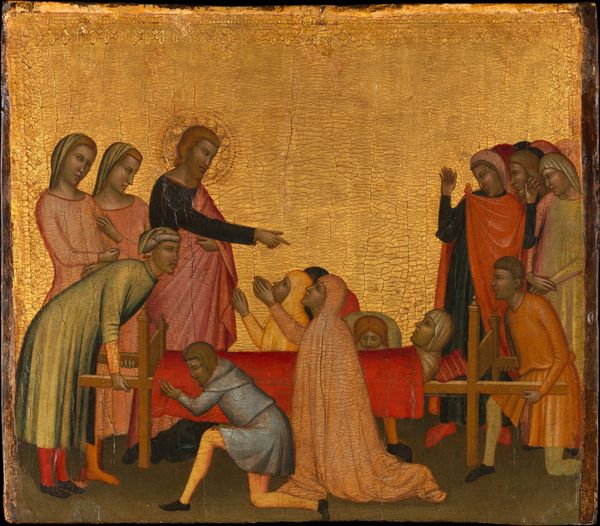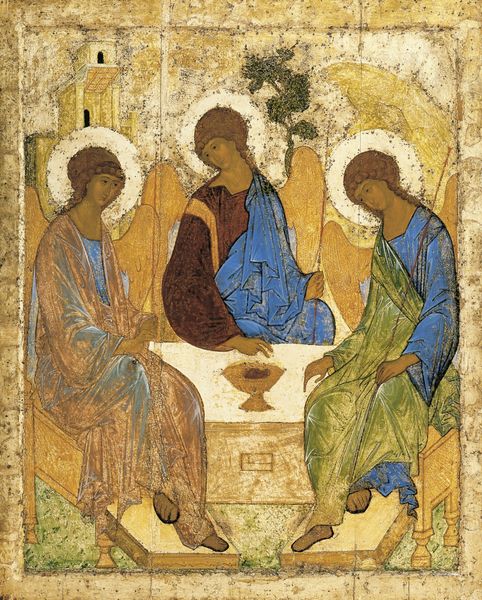
The Virgin Swooning and the Three Maries at the Tomb of Christ 1348 - 1352
0:00
0:00
panel, tempera
#
portrait
#
gouache
#
medieval
#
panel
#
water colours
#
tempera
#
figuration
#
history-painting
#
international-gothic
Dimensions: 21 cm (height) x 39 cm (width) (Netto)
Editor: Here we have Puccio di Simone’s “The Virgin Swooning and the Three Maries at the Tomb of Christ,” dating from around 1348 to 1352, created with tempera and gold on panel. There’s such a striking sense of sorrow and stillness... almost like time is suspended. What do you see in this piece? Curator: I see a powerful representation of female grief and solidarity. Consider the historical context: The Black Death was ravaging Europe during this time. This painting reflects collective trauma. The Virgin’s swoon, supported by the other women, transcends a singular religious narrative. Editor: In what way? Curator: Doesn’t it mirror the shared experiences of loss? This image becomes less about a specific biblical event and more about universal experiences of suffering, particularly for women who historically have had limited social or political agency. Their expressions of sorrow become a form of quiet resistance. Editor: I see what you mean. It’s like their grief is almost a form of protest. Curator: Precisely! The golden background, usually symbolic of divinity, feels almost oppressive here, doesn't it? Highlighting the chasm between heavenly promise and earthly realities of pain and suffering. Even the landscape feels barren. Editor: That's a perspective I hadn’t considered. I was focusing on the religious aspect, but understanding the historical and social factors completely changes my interpretation. Curator: These historical paintings aren't just illustrations, but complex documents that speak volumes about social conditions. Think about what it meant to express this kind of emotion in the 14th century, and for the artist to immortalize it. Editor: I definitely have a much richer understanding of the artwork now. Considering the context opens up so many avenues for interpretation. Curator: Indeed. And allows us to connect with it in new ways, understanding the threads that connect us to the past.
Comments
statensmuseumforkunst almost 2 years ago
⋮
This landscape looks more like a set piece from a theatre than a natural landscape. The sky has been replaced by a gold background. Around 1350 we see an emerging interest in the physiognomy of the human body and in nature. However, artists are not yet preoccupied with depicting landscapes in full detail as they might look in real life. That particular trend does not have its breakthrough in art until around 1600. In this work nature primarily serves a symbolic function. We can read the trees and flowers as symbols of the resurrection of Christ and of how life continues after death. These trees do, in fact, reach all the way up to the sky. Nature tells us more than the grieving figures in the painting can take in at the moment, but Christian observers of the depiction will know that something else will follow grief. Christ will be resurrected, and there will be a life after death in the golden Paradise.
Join the conversation
Join millions of artists and users on Artera today and experience the ultimate creative platform.
